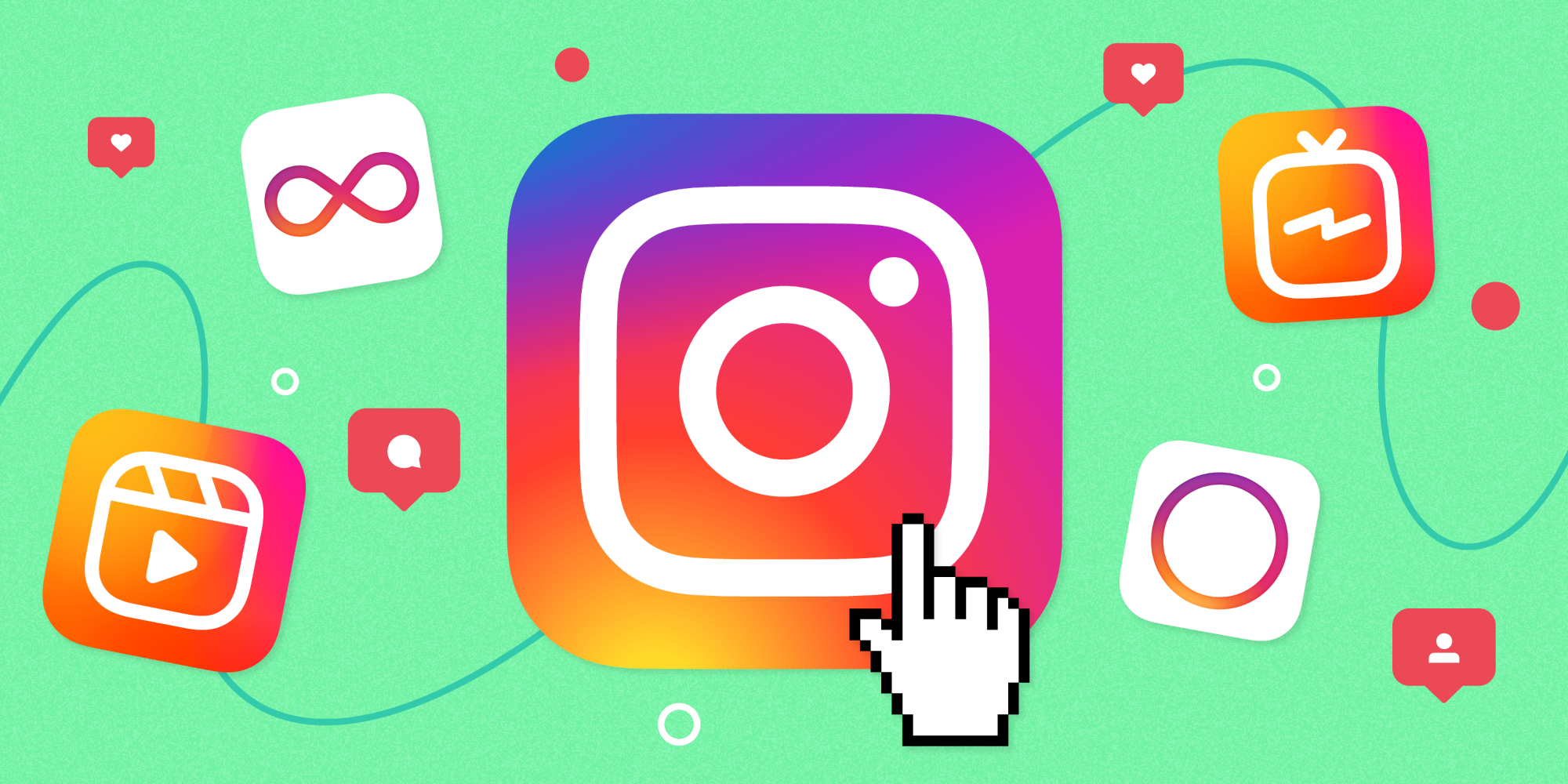Organic Instagram Marketing: The Fundamental Guide
The Pros and Cons of Organic Instagram Marketing
This photo-first platform has changed the way that the world thinks about social media. What started as a personal photography platform back in 2010 has blossomed into a powerful business driver, allowing brands to interact and engage with users around the world while also humanizing brands. This article will explore the pros and cons of deploying an organic Instagram marketing strategy in the B2B space, as well as a tactical implementation plan.
The Pros of organic Instagram marketing:
- Hashtagging. Instagram gives users the opportunity to not only follow accounts but also to follow hashtags. This provides B2B marketers with a massive opportunity to reach new prospects through hashtags that they might be following, and entice them to engage with your brand or offering.
- Graphic dependency. If you have a physical product or a service that is easy to depict graphically, then Instagram is a potential gold mine in not only paid but also organic strategy.
- User base. Since mid-2018, Instagram has maintained over 1 billion monthly active users, making it the second-largest social platform in the world, only falling behind Facebook.
- Low B2B competition. Only 25 million B2B companies around the globe are currently leveraging Instagram for business purposes.
- Engagement. According to a study conducted by TrackMaven, B2B companies experience their highest engagement ratios, which means that your posts will get the most engagements as a percentage of your followers across all of the major social platforms.

Source: TrackMaven
The Cons of organic Instagram marketing:
- Graphic dependency. This point earns itself a seat on both sides of the line because depending on your offering, it can be a benefit or a drawback. It can be a drawback if your offering cannot be easily captured in an appealing way; ergo, service businesses.
- Link integration. One of the greatest challenges with Instagram is the fact that business accounts cannot insert links directly into their posts unless they are verified
- People and culture focus. Instagram users aren’t interested in your latest blog content, so doing B2B marketing on Instagram is often more of a support mechanism to your other channels—a place to share achievements and showcase culture so that you can build trust among prospective customers.

How to launch an organic Instagram marketing campaign
1. Set growth goals
Refer to 2. Set growth goals in the Facebook marketing article to begin refining broader goals into more actionable objectives.
Some Instagram specific B2B goals include:
- Growth in relationships with industry leaders and influencers.
- Increased brand awareness through a regular posting cadence, hashtag strategy, and outreach.
- Growth in top of funnel (TOFU) website traffic.
- Attracting top talent through powerful cultural content.
Note: For B2B businesses, it can be difficult to drive conversions from the photo-first platform, but it is the optimal place to achieve many of the above objectives.
2. Do some hashtag research
The fastest way to grow your Instagram following and attract an interested and engaged audience is through hashtag strategy.
Here’s how to find relevant hashtags:
- Navigate to the Insta pages of your existing clients and see what hashtags they’re using. This can be a great way to track down niche hashtags that might be popular among your target audience.
- Use your SEO strategy to help identify hashtags. If you’ve already got a strong keyword strategy in place, then you should use your existing keyword library to help you expand your hashtag research.
- Search a breadth of hashtag categories. Community hashtags (#lovetheocean), branded hashtags (#Inbound), audience descriptive hashtags (#fitnesschicks), product descriptive hashtags (#carwraps), niche hashtags (#3mcarwraps), and location-based hashtags (#torontogymlife) should all be researched and leveraged (if applicable) in your organic posting strategy.
- Let Instagram do the heavy lifting. As you begin typing in hashtags, Insta will populate a number of suggested tags, and these suggestions can be very helpful in expanding your search.
- Investigate each prospective tag. You’re going to want to scroll at least the top nine posts on each tag to determine if the hashtag aligns with your brand and services your audience.
- Don’t forget to log all of your keyword research into a spreadsheet so that you can continually expand it and refer back to it later.
Here’s what you need to know about hashtags before you start posting:
- There are two places where you can use hashtags on Instagram: in the post caption or in the post comments. Functionally, these strategies both perform the same, but it can distract from other CTAs in your caption if you also include hashtags—so keep that in mind as your team decides on a strategy.
- Instagram limits you to 30 hashtags per post, and studies have shown that the best engagement rates are achieved when using 11 or more hashtags (79.5 percent interaction rate per 1k followers with 11 hashtags).
- Use a combination of higher density and lower density hashtags to diversify your impact.
- Don’t use the same hashtags in every single post, otherwise, you eliminate the opportunity of reaching different audiences across multiple posts. Testing different combinations might also reveal different results, so it’s critical that you remain fluid in your posting.
- Never use gimmicky hashtags like “#follow4follow” and “#likeforlike”. These hashtags aren’t targeted, attract the wrong traffic to your page, and can dilute your brand in the eyes of your existing audience.
3. Add Instagram posts to your content calendar
Unlike Facebook, Twitter, and LinkedIn, your content should look a little different on the photo-first platform. Whereas the aforementioned platforms are geared towards informational content, Instagram is better suited for cultural content. You will still want to build Instagram posts into the same content calendar, but you will want to focus your Instagram content on workplace happenings, awards, and micro-video content as opposed to sharing blogs, long-form videos, and posting questions.
See the organic Facebook section for more in-depth insights into creating a content calendar.
4. Capture great images
Instagram is an image first platform, unlike it’s Twitter counterpart. This means that many viewers don’t even make it to the caption, so you need to ensure that your images are enticing enough to direct action or direct your audience towards the details in the caption.
Here’s what you need to keep in mind when capturing photos for Instagram:
- Shoot in high definition. Whether you’re using your phone or a camera, ensure that you’re shooting images in the highest possible resolution. This allows you to crop and condense them later as you see fit.
- Maintain a consistent style. This is not to say that you can only post pictures if they have white backgrounds, but your page should have a very distinct style as users scroll through your posts.
- Use natural light and avoid image filters. We all remember the early days of Instagram when everyone ran sweet Clarendon filters on every post. Fortunately, those days are behind us, and so too should they be behind your business. Additionally, the usage of natural light serves to enhance the authenticity of your posts.
- Take vertical photos when possible. Standard Instagram image size is 1080px x 1080px, but 1080px x 1350px is effective for portrait, and 1080px x 608px is effective for landscape. That being said, the taller your photo content is, the more newsfeed space you’re going to occupy.
- Send a message. You don’t necessarily need to be selling something in every photo, but you should have a goal or outcome in mind for each post. As you will see in the example below, the goal of this post was to position Duly Marketing as a subject matter expert in the UX/UI spaces.
Source: Instagram @DulyMarketing
5. Keep it fun
Instagram is not as business intensive as a platform like LinkedIn, so you shouldn’t be afraid to showcase some personality in your posts.
Here are some fun ways to keep your Insta page lively:
- Use Instagram stories. Since 2016, Instagram stories have been a great way for users to showcase more of their day-to-day happenings and focus less on image quality. Brands can leverage stories to show off behind the scenes business activity, promote events, conduct polls, and more
- Publish video content. If your company has created a great video, then Instagram is the ideal platform to amplify it’s impact. How-tos, promotional product videos, and cultural happenings are just a few ways that you can leverage video.
- Live streams. If you want to take your video strategy to the next level, try live streaming presentations that are public friendly.
- Host contests. Contests can be a great way to promote a conference or event while also growing your Instagram page organically. Make sure and have a clear CTA (ex. Tag 3 friends to be entered), give away something valuable, and prepare for an influx of engagement.
Bonus: Use the $1.80 strategy
Gary Vaynerchuk coined the “$1.80 strategy” for what he describes as leaving your two cents on 90 Instagram posts per day. This is a bonus section because it’s incredibly time consuming and laboring work, but it can also be a great way to boost your organic following by targeting an active and engaged audience of potential customers.
Here’s the process:
- Search up relevant hashtags (use your existing hashtag research)
- Scroll through the top posts on at least 10 of those hashtags
- Like those posts
- Leave your two cents in the comments until you’ve commented on roughly 90 posts
- Repeat each work day
Check out this in-depth article on Instagram for Business to find out more.







